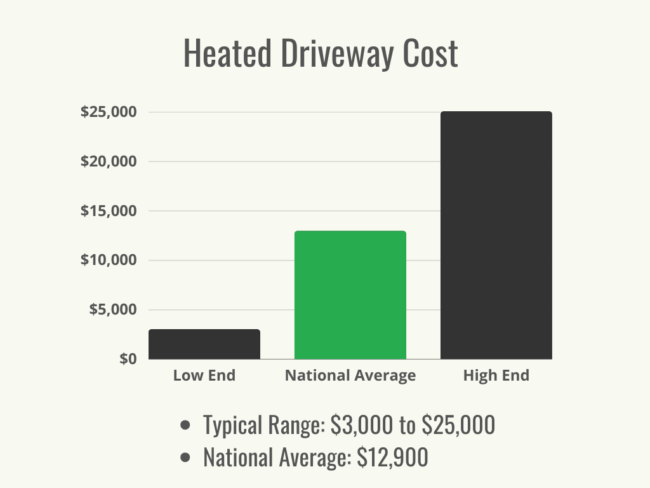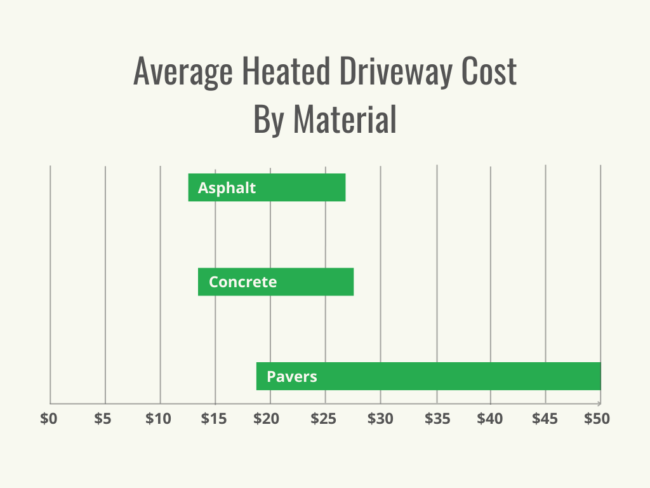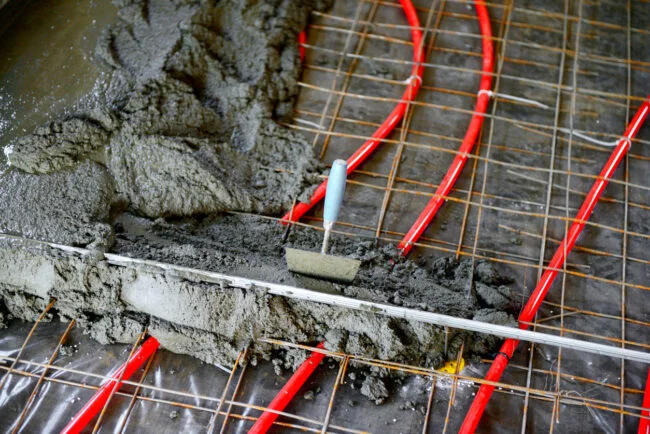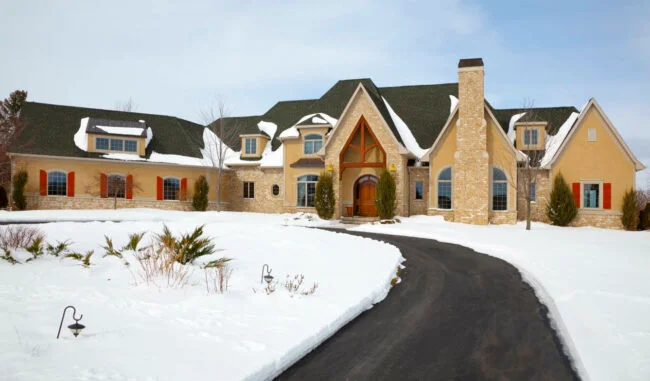Heated driveways are a luxurious addition that can save homeowners both time and money during the winter season. Although initially perceived as a high-end feature, heated driveways come with numerous advantages, including convenience, safety, and increased property value. In this article, we will delve into the various factors that influence the cost of installing a heated driveway, explore the benefits they provide, and discuss strategies for cost-saving during the project.
Heated Driveway Cost Factors

The cost associated with installing a heated driveway is influenced by several critical factors, including:
1. Driveway Size: The larger the driveway, the higher the cost of heating. Additionally, irregularly shaped or curved driveways tend to be more expensive to equip with a heating system.
2. Driveway Material: The material of the driveway plays a substantial role in determining costs. Common materials include asphalt, concrete, and pavers, each with its associated price point.
3. Heating System Type: There are various heating systems for driveways, including electric, hydronic, and portable mats. The choice of heating system significantly impacts installation costs.
4. Labor, Installation, and Materials: Labor and installation expenses can fluctuate depending on the location of the property. Remote areas may incur additional charges, while material costs can vary due to demand and availability.
Additional Costs and Considerations
There are other essential considerations when estimating the cost of a heated driveway:
– New Driveway vs. Retrofit: Retrofitting an existing driveway with a heating system is feasible, but it has limitations, particularly for concrete driveways. Installing a new driveway with integrated heating elements is a more straightforward process.
– Existing Driveway Removal: If retrofitting isn’t feasible, removing the existing driveway and installing a new one will add to the overall project cost.
– Manual vs. Automated Controls: Automated systems, while more convenient, come with higher purchase and operational costs compared to manual systems.
– Drainage: Proper drainage is crucial to prevent refreezing and the formation of black ice, requiring additional expenditure for runoff solutions.
– Heated Sidewalk Installation: Extending the snow-melting system to sidewalks can increase costs, but it offers convenience and enhances safety.
– Design Elements: Decorative features like stamped or stained concrete and stone borders can contribute to the project’s cost.
– Operating Expenses: The ongoing cost of operating a heated driveway varies depending on electricity rates and snowfall.
– Maintenance: Routine maintenance is minimal, but repairs or replacements may be necessary for the heating system or the driveway surface.
Heated Driveway Cost by Type of Heating System

Three primary types of heated driveway systems exist:
- Electric: Electric systems utilize electric cables to melt snow and are easier to install and cost-effective. The typical cost ranges from $3,200 to $5,800.
- Hydronic: Hydronic systems use a boiler system to circulate heated water and are more powerful but come at a higher installation cost. The typical cost ranges from $4,200 to $8,700.
- Portable Mats: Portable mats are the most affordable option, as they do not require professional installation. On average, these mats cost around $1,600.
Benefits of Installing a Heated Driveway

Heated driveways offer several compelling advantages:
– Reduced Shoveling: Bid farewell to the burdensome task of manually clearing snow, saving both time and physical effort.
– Increased Safety: A heated driveway reduces the risk of slip-and-fall injuries on icy surfaces, ensuring safer conditions for residents and visitors.
– Damage Protection: Snow-melting systems protect driveways from the use of de-icing chemicals, extending their longevity and reducing repair costs.
– Little to No Maintenance: When installed correctly, heated driveway systems require minimal ongoing maintenance.
– Added Home Value: In regions prone to heavy snowfall, a heated driveway can enhance a property’s appeal and overall value.
– Reduced Salt Needs: Heated driveways eliminate or minimize the need for salt or chemical de-icing.
– Heated Driveway Installation: DIY vs. Hiring a Professional: The installation of a heated driveway is a complex task best handled by professionals with expertise in plumbing, electrical work, and paving. DIY attempts may lead to mistakes and additional costs.
How to Save Money on Heated Driveway Costs
Cost-saving strategies for heated driveways include:
| Heating System Type | Average Cost (Materials Only) |
| Electric | $3,200 to $5,800 |
| Hydronic | $4,200 to $8,700 |
| Portable mats | $1,600 |
– Choose Heating Mats: Consider portable heating mats as a more affordable alternative to a full radiant heating system.
– Do Some Demolition: If feasible, handle the removal of the old driveway yourself to reduce labor costs. However, consider disposal logistics.
– Heat Only What You Need: Focus on heating high-traffic areas or tire grooves, especially if you have a wide driveway.
– Financing Options: Explore home improvement or home equity loans to spread the cost over time.

Heated driveways offer a convenient and safe solution for snow and ice removal while protecting your driveway’s longevity. While the installation cost can vary based on several factors, the benefits of reduced maintenance, increased safety, and added home value make heated driveways a valuable investment in regions with harsh winters. When considering this home improvement project, be sure to evaluate your specific needs, budget, and available options to make an informed decision.
FAQs
Q1: How long does a heated driveway last? When installed correctly, a heated driveway system can last up to 20 years. Over time, it may need some repairs, such as replacing the electrical control board or boiler, depending on which type of system the driveway has.
Q2: Can I heat my existing driveway? In some cases, it’s possible to retrofit an existing concrete or asphalt driveway to add a radiant heating system. The installer would make a series of saw cuts, into which the cables are inserted, and then cover it with whichever material the driveway consists of. It’s typically easier to retrofit a driveway with electric cables than a hydronic system. Retrofitting can cost more to run due to the lack of insulation underneath.
Q3: How much snow can a heated driveway handle? Heated driveways can melt up to 2 inches of snow per hour. The melt-off will not refreeze as long as the system is on, keeping snow and black ice off the driveway.
Q4: How much does it cost to run a heated driveway? The average operating cost to run a heated driveway is $120 to $600 annually, but that depends on the type of system you have and energy prices in your area. Electric systems cost about $0.14 per kilowatt-hour to run.
In conclusion, heated driveways offer a solution to the challenges posed by snowy and icy winters. While they involve an initial investment, the convenience, safety, and reduced maintenance costs make them a worthwhile addition for homeowners living in colder regions. Understanding the cost factors, benefits, and cost-saving strategies can help homeowners make informed decisions when considering a heated driveway installation.
images source : bobvila









